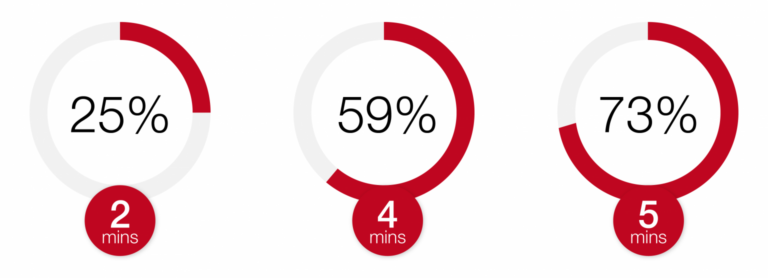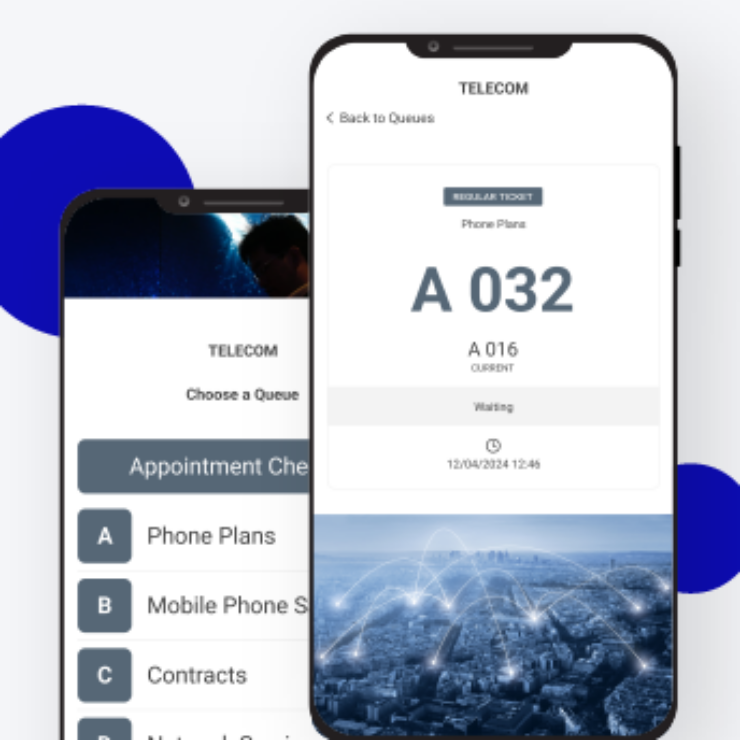The Real Cost of Queues
How an Inappropriate Queue Management affects your Business?
There is no arguing with the feeling that nobody likes queues, nobody is ever excited to be in a queue, and nobody looks forward to them. There is also something that is rarely discussed about queues: their enormous cost.
Do you know how much time we spend in queues?
Half an hour a week? An hour? Turns out that, based on several studies made across many countries, on average, one person spends over 113 hours per year in queues!!!
According to the “How Long Does It Take To Lose Your Customer” report, as the length of time spent in queues grows longer, the customers’ patience grows shorter:
- 25% would only wait a maximum of two minutes.
- 59% would wait no longer than four minutes.
- 73% would abandon their purchase if they had to queue for more than five minutes.

How long customers are willing to wait?
A regular customer considers nine minutes long enough to make them reconsider a purchase and walk out from queues more than seven people deep.
- 86% say they avoid stores if they perceive the queue to be too long.
- 83% consider fast-moving queues an essential part of the customer experience.
- 76% say stores should be doing more to reduce queues in busy periods.
The impact of a lack of queue management on brand loyalty
Slow-moving queues cause not only customer frustration but may also affect brand loyalty:
- 74% would buy in a competitor’s store if they perceive the queue time to be quicker.
- 70% would be less likely to return to the store again if they had experienced long waits, researchers found.
Being able to complete a purchase quickly has a significant effect on how customers view a retailer: 56% of consumers say fast payment and reduced queueing is critical to “positively influencing their perception of a retail brand”.
Poor customer queueing and lost revenue
Queues by themselves do not have a price tag, but it does not mean that they don’t come at a cost to companies. While for customers queues mean a waste of time, for companies it is all about missed revenue. This can ultimately have a huge impact on the bottom line.
In the past year alone, almost 66% of consumers have abandoned their purchase because of long queues, with only 22% returning later to make the purchase. In general, queues play a significant factor in determining a customer’s willingness to make a purchase.
A research paper called “Measuring the Effect of Queues on Customer Purchases” estimates that “increasing the queue length from 10 to 15 customers would reduce purchase incidence from 30% to 27%”, which corresponds to a whopping 10% drop in sales.
Crowdedness in general has disastrous consequences. Research called “Does a Crowded Store Lead to a Crowded Mind? Crowding and Mental Construal of Product Features” found that a socially crowded environment leads people to think more concretely and lowers motivation to pay for a product. That is why we are subconsciously trying to minimize our interactions with crowded places. When we see a suboptimal queue that exceeds the length we would otherwise tolerate, we often decide to draw back.
Queues negatively affect visitor experience in most industries, but especially retail. Supermarkets are deemed to be causing the most queueing troubles, followed closely by fashion stores and “do-it-yourself” locations. In all three, mismanaged queueing results in poorer revenue results.
In short, long waiting times are costing you sales, and you need to do something about it.
A good queueing solution helps you by providing a better service experience and capitalizing your revenue.
The percentage of customers using online shopping is increasing every year. Consumers take advantage of the convenience, the choice available, the ability to compare prices, and of course, the lack of queues.
Traditional street-side businesses can hardly compare. Therefore, to retain their increasingly pickier customers, they need to start providing a better in-store customer experience, starting by eliminating the queueing annoyance.
Reducing queues is not only about freeing customer time; it is about making sure the customers use the free time that mutually benefits them. You make them feel empowered, they can manage their own time!
Customers can even spend it at your store, either window-shopping or looking at potential purchases for later. This leads directly to a huge increase in sales through upselling, cross-selling, promotions, …. you name it.
Every queue that causes complaints or delays is a missed sales opportunity. In other words, solving queues helps you not only not lose revenue, but also maximize it.
Remember, customers appreciate businesses that respect their time and provide smooth and efficient service. By recognizing the importance of queue management, businesses can leverage these opportunities to drive customer loyalty and maximize their sales potential.




